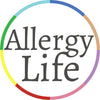Hypersensitivity type may be- Type I Allergy
Immune reactions may be from- IgE
Reactions may occur in- Minutes
Sesame Seeds are tiny and extensively used in the food industry in a variety of forms (scroll below to see the some common places it can be found in). Over the past decade they have grown in emergence as a more common allergen that can cause an allergic reaction.
An allergy caused by the protein found in Sesame, having a Sesame Seed allergy may also mean an allergy to other seeds such as Mustard Seeds, Sunflower Seeds, Rapeseeds, Flaxseeds, Poppy Seeds and Pine Nuts (considered a seed).
SESAME SEEDS are one of the 10 most common food allergens in Australia, that all together account for 90% of food allergies in Australia.

SYMPTOMS
Some of the symptoms may be characterised by:
- Itching sensation
- Skin redness
- Trouble swallowing
- Rhinitis
- Conjunctivitis
- Swelling of the lips
- Contact dermatitis
- Urticaria/ Hives
- Difficulty Breathing
- Shortness of breath
- Wheezing
- Asthma aggravation
- ANAPHYLAXIS
The validity and severity of these symptoms are dependent on the individual and the level of exposure, as determined by a qualified health care provider.
TREATMENT
If you experience or are in the presence of someone who encounters a serious reaction (this may include difficulty breathing, wheezing, throat tightening, swelling, collapse, etc), follow their action plan or emergency instructions and call or have someone call Triple Zero (000) immediately.
Adrenaline (Epinephrine) is the first-line treatment for Anaphylaxis. After administering Adrenaline (Epinephrine), seek emergency medical attention by calling Triple Zero (000) for an ambulance.
If you are unsure what to do, call Triple Zero (000).
If you or someone you know is suspected of having an allergy, it’s important to discuss diagnosis, symptoms and treatment with a qualified health care provider to understand how to manage individual allergies and also to set up an Allergy Action Plan in the case of a reaction.
Always present your Allergy Card, Medical Alert Bracelet, Action Plan or Necklace to ensure health care providers, family members, friends, colleagues and others are aware of your Allergies.
TESTING
A skin prick test may be used to test for a Sesame Seed Allergy.
LABELLING
Some labels or terms you may come across on Sesame Seed Allergy friendly products:
"Sesame Seed Free" "No Sesame Seed" "Sesame Seed Alternative"


RANDOM ALLERGY FACT
Do you remember "Open Sesame", the magical password that opened the entrance to the cave in Ali Baba and the Forty Thieves? This is a reference to that fact that ripe sesame seeds burst from their pods with a sharp POP!!
WHERE YOU MAY COME ACROSS SESAME SEEDS
The below is not a complete list, but just some of the places you may come across Sesame Seeds:
- Aqua libra
- Benne
- Benniseed
- Bread sticks
- Breads
- Burger buns
- Canola oil
- Cereal bars
- Cereals
- Cottonseed oil
- Falafel
- Gingelly seeds
- Gomasio or gomashio
- Granola products
- Grapefruit seed oil
- Halva or halva
- Health bars
- Hummus
- Hummus
- Margarine
- Pasteli
- Pumpkin seed oil
- Rice cakes
- Salad dressings
- Salads
- Sauces
- Seed oil based cosmetics
- Sesame
- Sesame oil
- Sesame seed
- Sesamol
- Sesomolina
- Sim sim
- Soups
- Sunflower oil
- Tahini
- Tahini or tahina
- Til
- Veggie burgers
The information provided on Allergy Life Australia is to generally educate and inform you about living with allergies, intolerances and conditions, and is not intended as medical instruction or as a substitute for diagnosis, examination and advice by a qualified health care provider.




